Pearl Cockatiel vs Lutino Cockatiel: A Comparative Study
Dive into our comparative study of Pearl and Lutino Cockatiels, highlighting differences in appearance, behavior, and care needs. Enjoy reading!
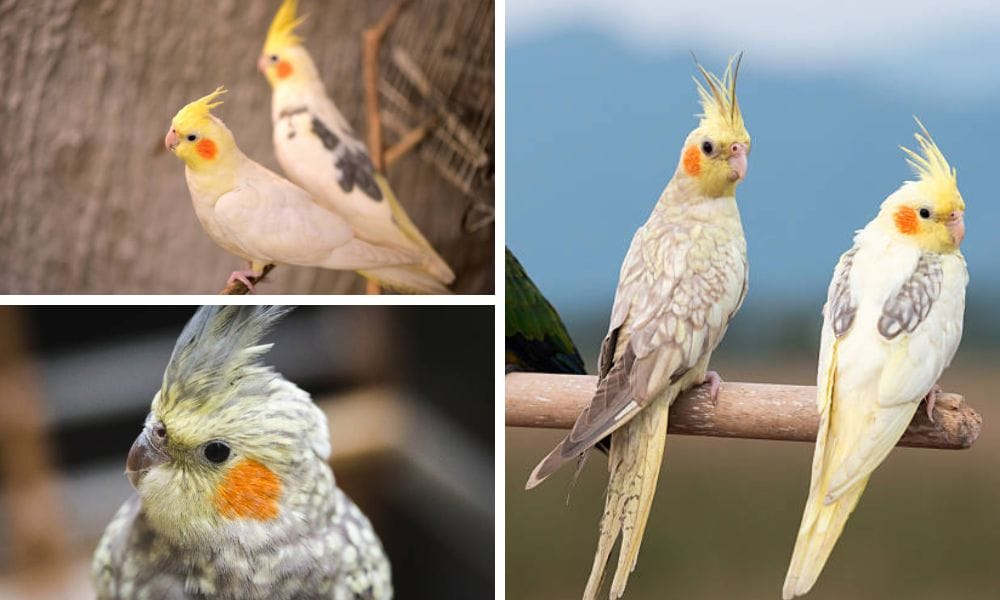
Key Takeaways:
- Understand the distinct visual and genetic differences between pearl and lutino cockatiels.
- Learn about the care requirements and health concerns specific to each cockatiel variety.
- Discover the behavioral traits and suitability of each type of cockatiel as a pet.
Cockatiels have long been cherished as pet birds, with their charming personalities and striking features captivating bird owners around the world. Among the various mutations, the pearl cockatiel and the lutino cockatiel stand out for their unique appearances and characteristics. This article delves into a comparative study of these two popular varieties, exploring their differences, care needs, and what makes them special members of the cockatoo family.
Visual Distinctions: Pearl vs. Lutino
Pearl Cockatiels: A Tapestry of Patterns
Pearl cockatiels, also known as pearly cockatiels or laced cockatiels, boast a distinctive pattern that resembles a pearl necklace. Most pearl cockatiels have a base of grey feathers, overlaid with a pattern of golden pearls across their back, wings, and head. The males lose this pearling after their first molt, often resulting in a more solid grey color, while females retain the intricate patterns throughout their lives.
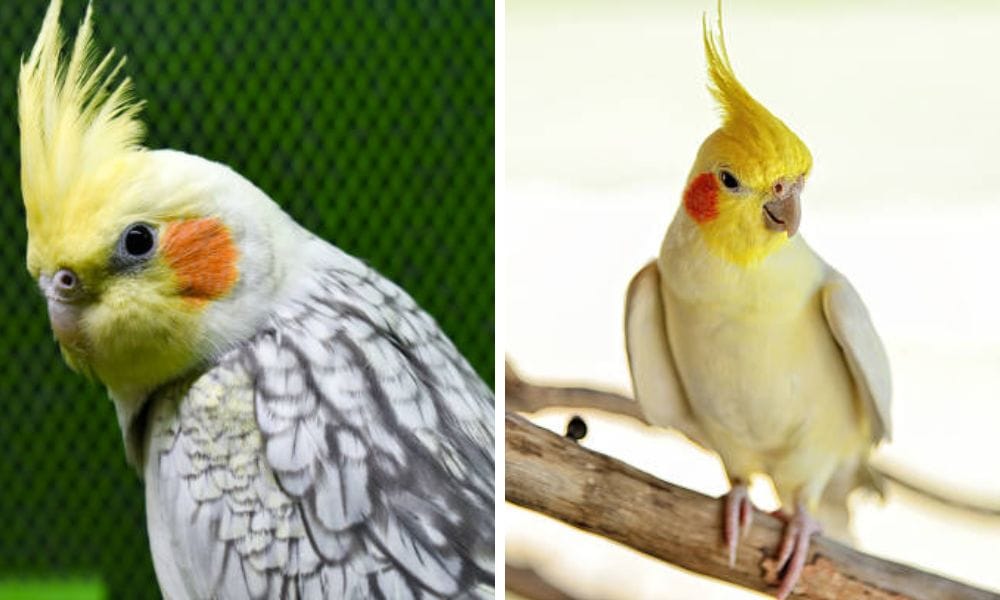
Lutino Cockatiels: Radiant Yellow White Bird
Lutino cockatiels, on the other hand, are a yellow white bird with a stunning yellow pigmentation that covers their entire body. Their red eyes and orange cheek patches are a striking contrast against their yellowish face and white appearance. Unlike the pearl variety, lutino cockatiels do not exhibit the same pattern changes with age, maintaining their bright coloration throughout their lives.
Genetic Makeup and Breeding
The Inheritance of Pearling
Pearl cockatiels carry a sex-related genetic mutation that affects their feather patterning. This mutation is particularly interesting because young males and female cockatiels display the pearling, but as young males mature, they typically lose the pearling after their juvenile molt, making sexing these birds easier for many breeders.
Lutino Genetics: A Color Mutation
Lutino cockatiels are the result of a color mutation that eliminates the grey colors from their feathers, leaving them with a predominantly yellow and white color scheme. This mutation is also sex-linked, and specific breeders often seek out lutinos for their striking appearance and the potential to create various lutino-related mutations.
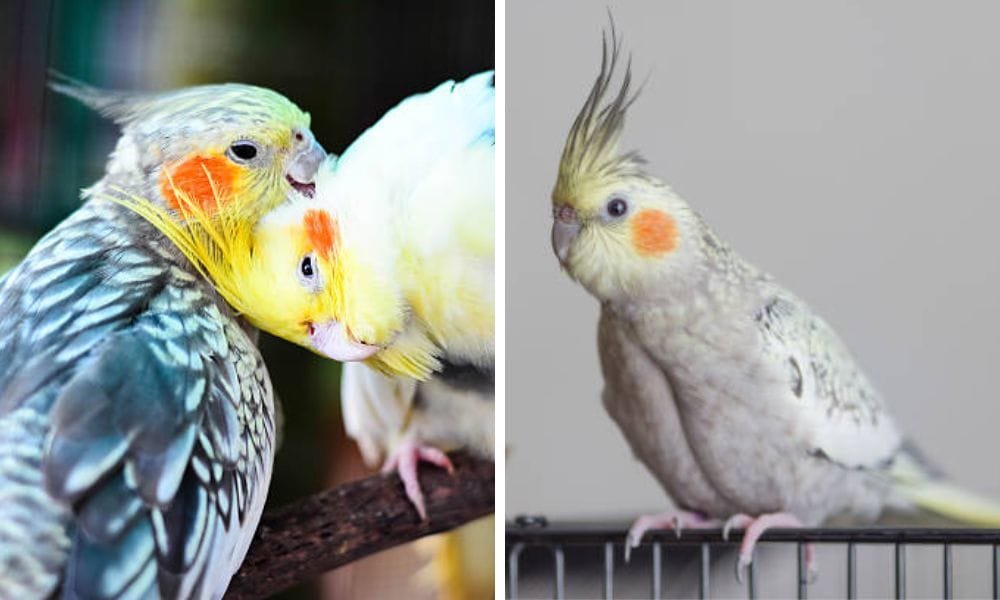
Behavioral Traits and Temperament
The Personality of Pearl Cockatiels
Pearl cockatiels are known for their docile personalities, making them excellent companions. They are often described as gentle and affectionate, with a tendency to form strong bonds with their owners. These birds can be quite sociable and enjoy interacting with their human families.
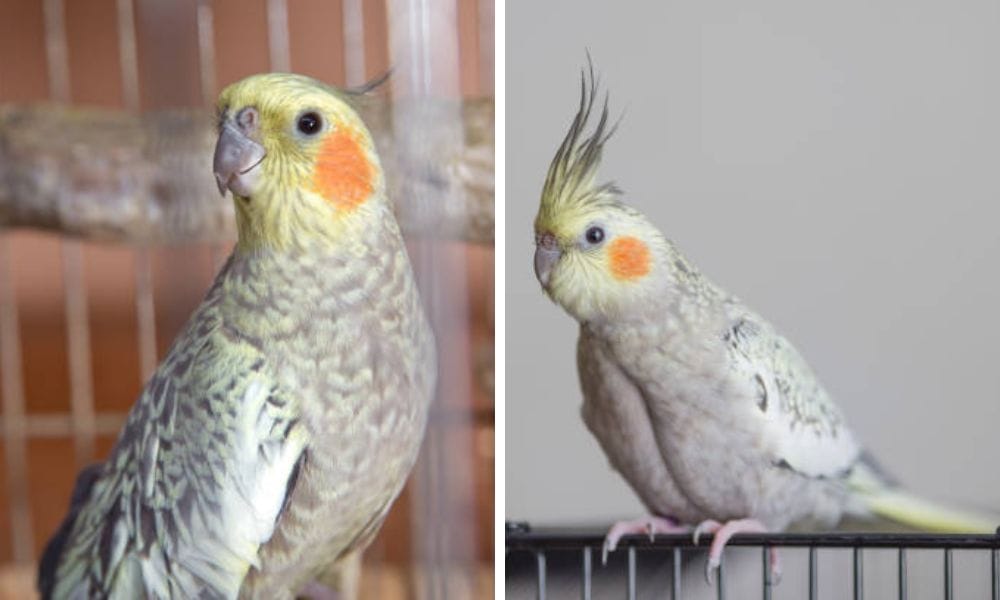
Lutino Cockatiels: Sociable and Vocal
Lutino cockatiels share many of the same behavioral traits as other cockatiels, including being social and enjoying interaction. They can be quite vocal, serving as natural alarm clocks with their morning and evening calls. Lutino cockatiels are also known for their playful nature and can be quite entertaining to watch.
Health and Care Considerations
Diet and Nutrition for Pearl Cockatiels
Pearl cockatiels require a balanced diet that includes a variety of seeds, pellets, and fresh fruits and vegetables. It's important to monitor their food intake as they can be prone to obesity and related health issues like fatty liver disease. Providing a flying cage with ample space can help keep them active and healthy.
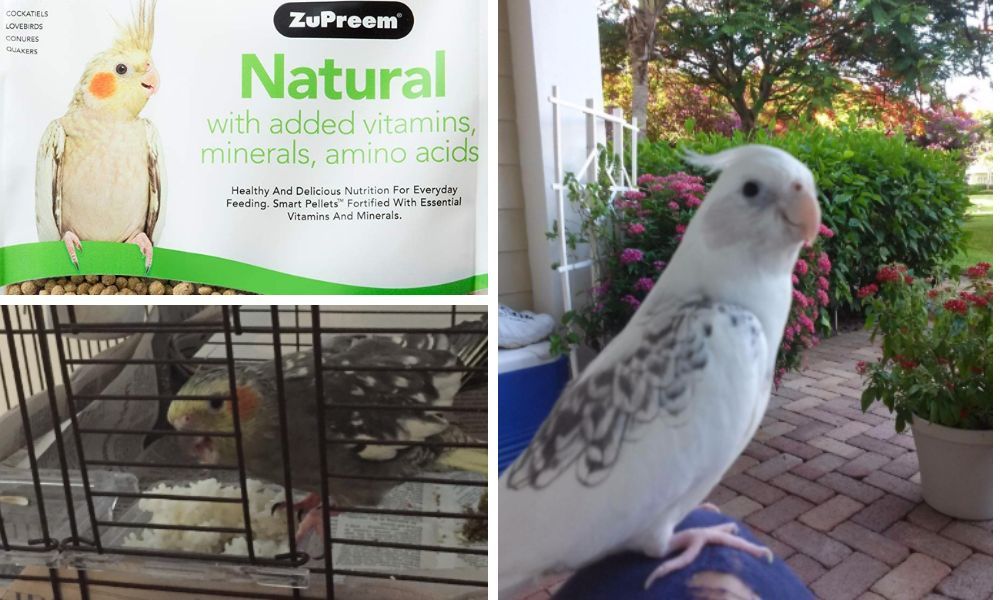
Lutino Cockatiels: Special Attention to Health
Lutino cockatiels may require additional care to prevent health issues. Their red eyes can be sensitive to bright light, and they may be more susceptible to conditions such as nasal discharge or feather plucking. A diet rich in vitamins and minerals, along with regular health check-ups, can help maintain their well-being.
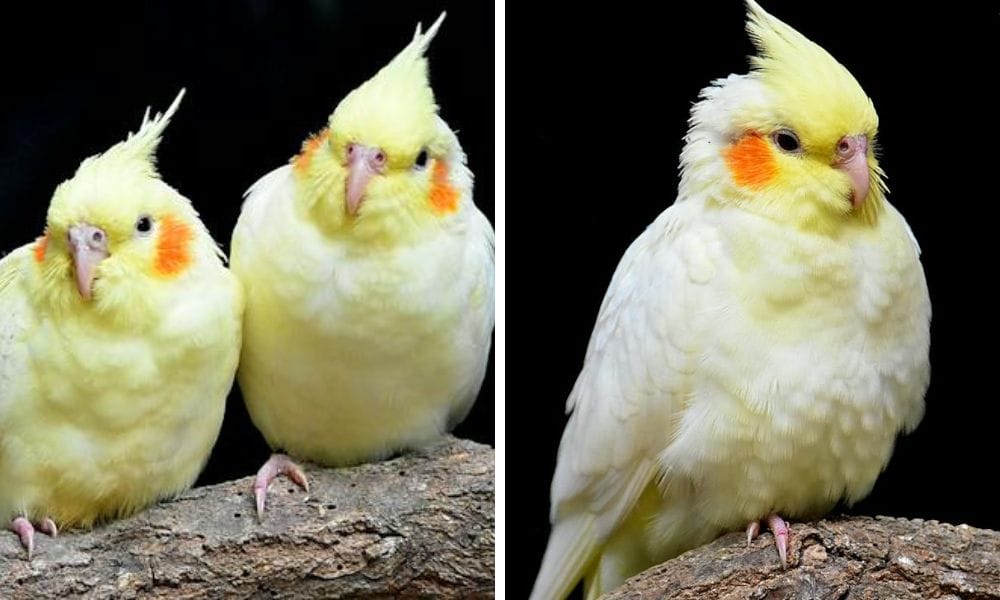
Lifespan and Longevity
How Long Do Pearl Cockatiels Live?
With proper care, pearl cockatiels can live for 15 to 20 years. Factors that contribute to a longer lifespan include a nutritious diet, a clean and safe living environment, and regular veterinary care. Engaging them in mental and physical activities also plays a crucial role in their overall health.
The Lifespan of Lutino Cockatiels
Lutino cockatiels have a similar lifespan to pearl cockatiels, with many birds reaching the 15 to 20-year mark. Consistent care, a balanced diet, and a stress-free environment are key to ensuring that these vibrant birds live a full and healthy life.
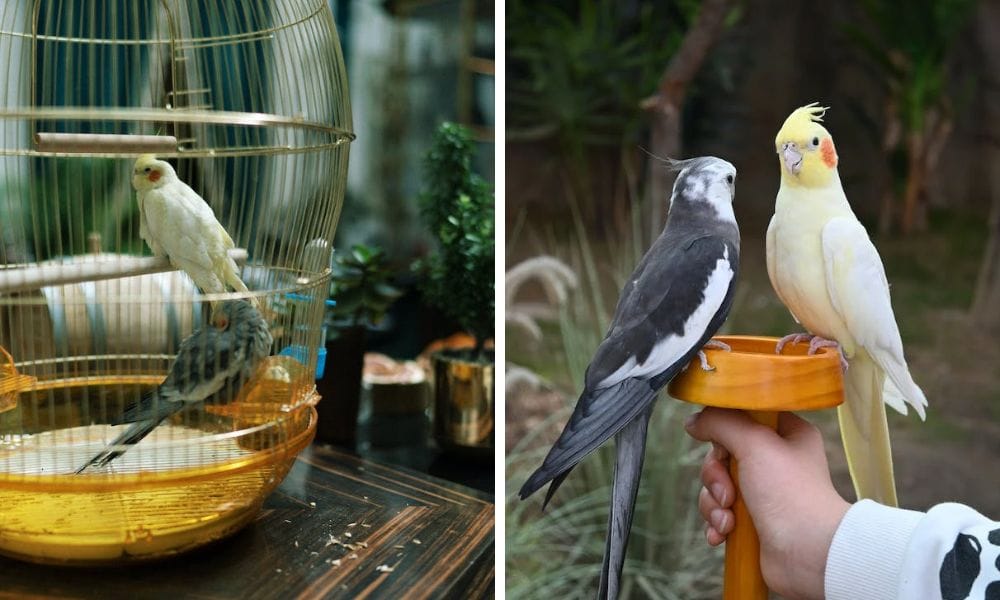
Tail Feathers: The Mark of Distinction in Cockatiels
When it comes to identifying and appreciating the beauty of cockatiels, tail feathers play a significant role. In pearl cockatiels, the tail feathers often exhibit a mesmerizing pattern that complements their pearly tiels, with a mix of light blue-gray feathers and warm tans that can captivate any pet bird enthusiast. These feathers not only add to the bird's aesthetic appeal but also serve as a canvas reflecting their genetic diversity. On the other hand, lutino cockatiels boast a striking contrast with their long, bright yellow tail feathers that may have a yellowish infusion, enhancing their radiant appearance and making them a favorite among bird lovers.
The tail feathers of cockatiels are not just for show; they also provide insights into the bird's health and well-being. Healthy tail feathers in pearl cockatiels should have a smooth, clean appearance without any signs of fraying or discoloration, which could indicate a well-maintained bird. Lutino cockatiels, with their distinct yellow crest and tail feathers, require careful observation over time to ensure that their vibrant color remains untarnished by potential health issues or environmental factors such as pesticide residue. Regular checks and maintenance of these feathers are essential for the overall health of these beloved pet birds.
The Allure of Light Blue Gray Feathers in Cockatiels
Cockatiels are known for their stunning variety of colors, and the light blue gray feathers are no exception. These feathers can be particularly mesmerizing, offering a soft hue that stands out among the more common colorations. In the wild, cockatiels display a more subdued color palette, but selective breeding has allowed this unique shade to emerge. It's not just the color that's captivating; the way these feathers shimmer in the light adds an extra layer of beauty to these already charming birds.
The presence of light blue gray feathers is often associated with the white faced cockatiels, a mutation that lacks the typical yellow and orange pigmentation. This results in a striking contrast between the white face and the rest of the body. The orange cheek patch, a hallmark of the standard cockatiel, is absent in these birds, giving them a distinguished and elegant appearance. Bird enthusiasts often seek out these particular cockatiels for their unique and sophisticated look, which can be a focal point in any aviary.
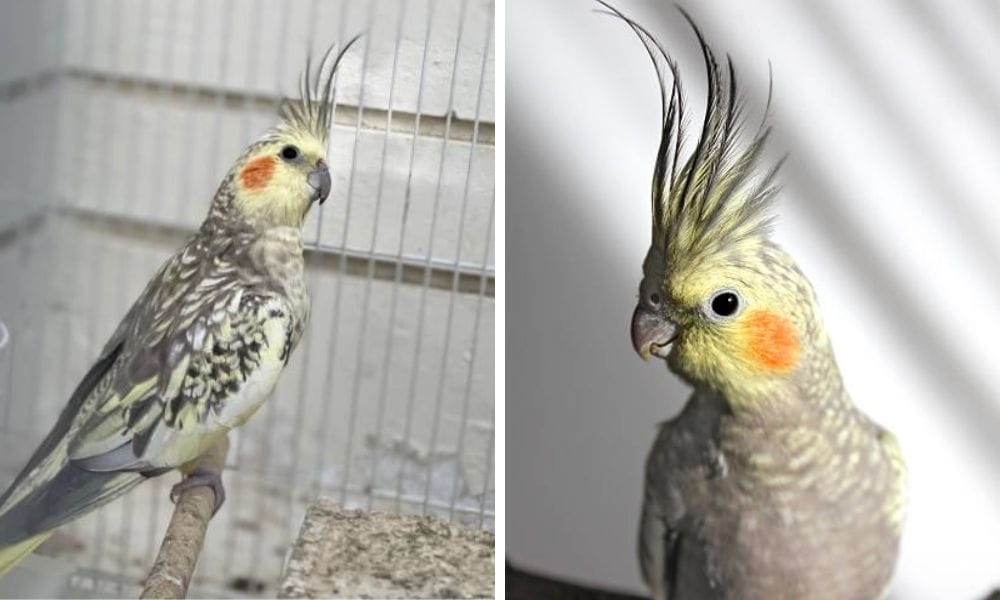
Understanding Sex-Linked Mutations in Cockatiels
Sex-linked genetic mutations in cockatiels, such as the lutino variant, are fascinating from a genetic standpoint. These mutations are carried on the X chromosome, which means that the inheritance pattern is different for male and female birds. For instance, a male cockatiel only needs one copy of the mutated gene to express the lutino color, while a female needs two. This is because males have one X and one Y chromosome (XY), while females have two X chromosomes (XX).
In practice, this means that breeding strategies must be carefully planned when aiming to produce offspring with specific sex-linked traits. For example, pairing a lutino male with a normal female can result in all female offspring being lutino carriers, while the males can either be lutino or normal. Breeders often keep detailed records and pedigrees to manage these genetic outcomes. Additionally, the wider pelvic bones observed in female cockatiels can sometimes aid in determining sex when sex-linked mutations are present, as these physical differences are tied to their reproductive roles.
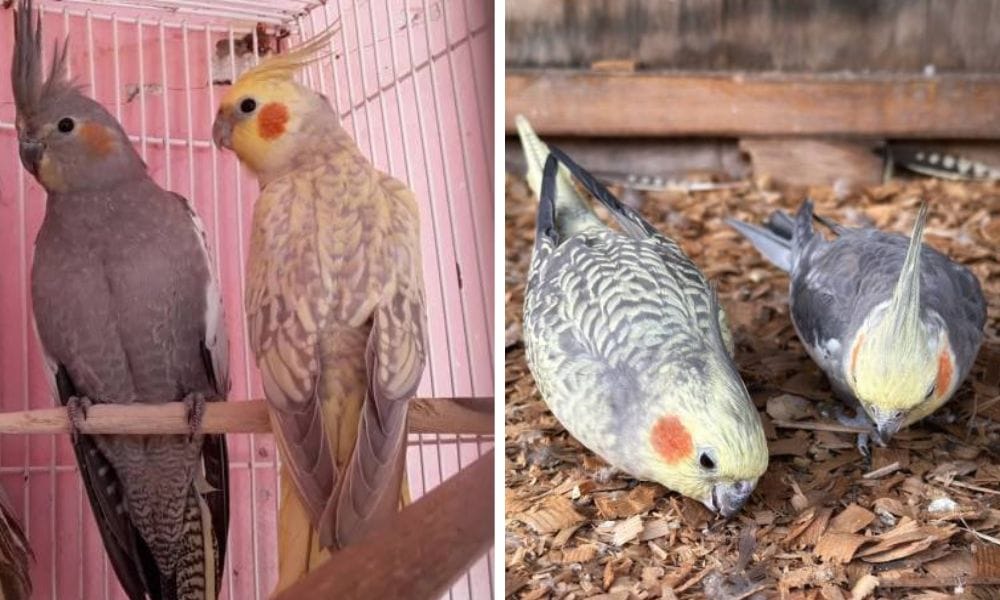
The First Cockatiel Mutation: A Glimpse into Avian History
The first cockatiel mutation, observed in captive birds, was the cinnamon pied pearly, a delightful variety that showcased a cinnamon brown color with a pattern of silver pearls across its gray body. This mutation marked the beginning of a fascinating journey into the world of cockatiel breeding and genetics. The cinnamon pied pearly mutation, initially discovered in the mid-20th century, paved the way for numerous other mutations, including the opaline cockatiels and the white-faced cockatiels, each with their unique set of characteristics and color patterns.
As breeders continued to explore the genetic possibilities, they introduced mutations such as the white wing bars on light pied cockatiels and the pearly whiteface with its elegant combination of pearly tiels and a stark white face. These mutations are not only visually stunning but also serve as a testament to the intricate sex-related genetic mutation processes that occur within these birds. Young cockatiels that inherit these mutations often display a blend of the parent's traits, such as the yellow faces of lutino cockatiels or the clear pied pattern seen in some pearl tiels. This genetic diversity ensures that each pet bird is a unique individual, adding to the allure and fascination of cockatiel ownership.
Molting and Feather Care
Understanding Molting in Pearl Cockatiels
Molting is a natural process for pearl cockatiels, during which they shed old feathers and grow new ones. This can be a stressful time for the bird, and they may require extra nutrients and care. During the molt, male pearl cockatiels may lose their pearling, which can be a dramatic transformation.
Lutino Cockatiels and Feather Maintenance
Lutino cockatiels also go through regular molting cycles. Their bright yellow feathers may require additional care to keep them looking their best. Regular baths and a clean environment can help prevent feather dust buildup and keep their plumage in top condition.
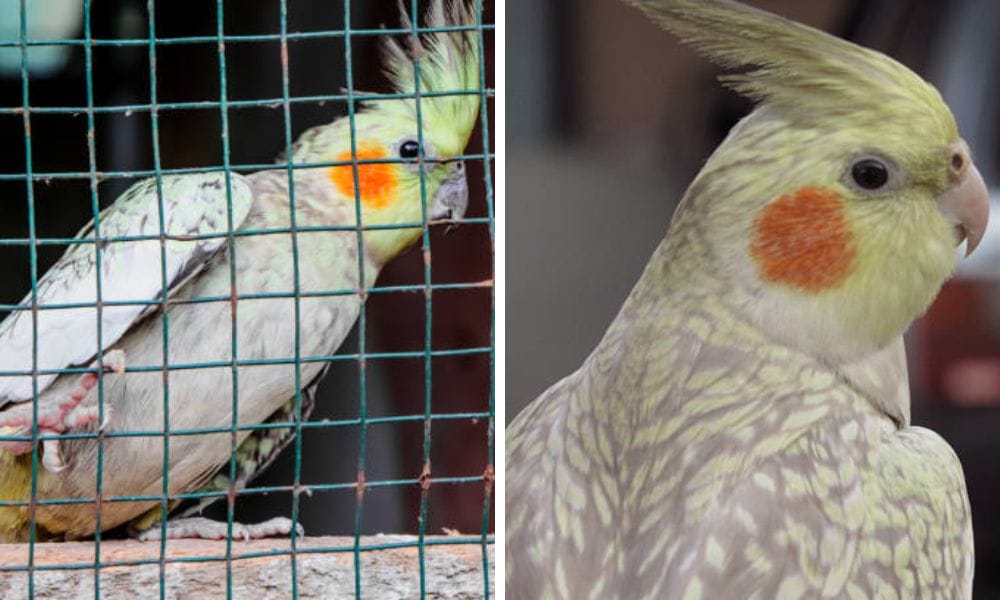
Training and Socialization
Teaching Pearl Cockatiels New Tricks
Pearl cockatiels are intelligent and can learn a variety of tricks and commands. Consistent training sessions and positive reinforcement can help these birds learn to perform entertaining tricks, mimic sounds, and even speak a few words.
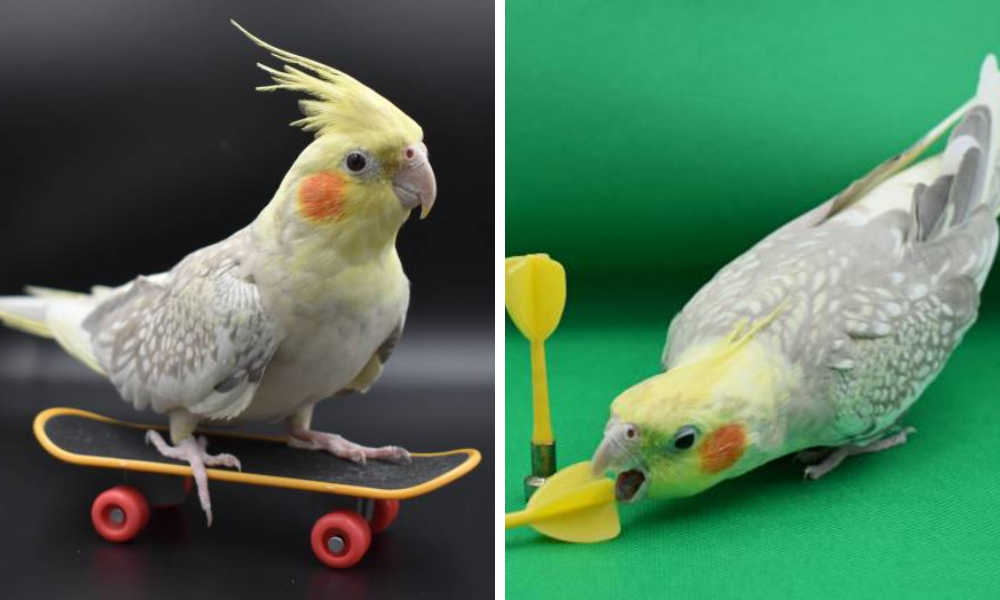
Socializing Lutino Cockatiels
Lutino cockatiels are also capable of learning tricks and commands. Socialization from a young age is important for these birds, as it helps them become well-adjusted and comfortable around people and other pets. Regular interaction and playtime can greatly enhance their quality of life.
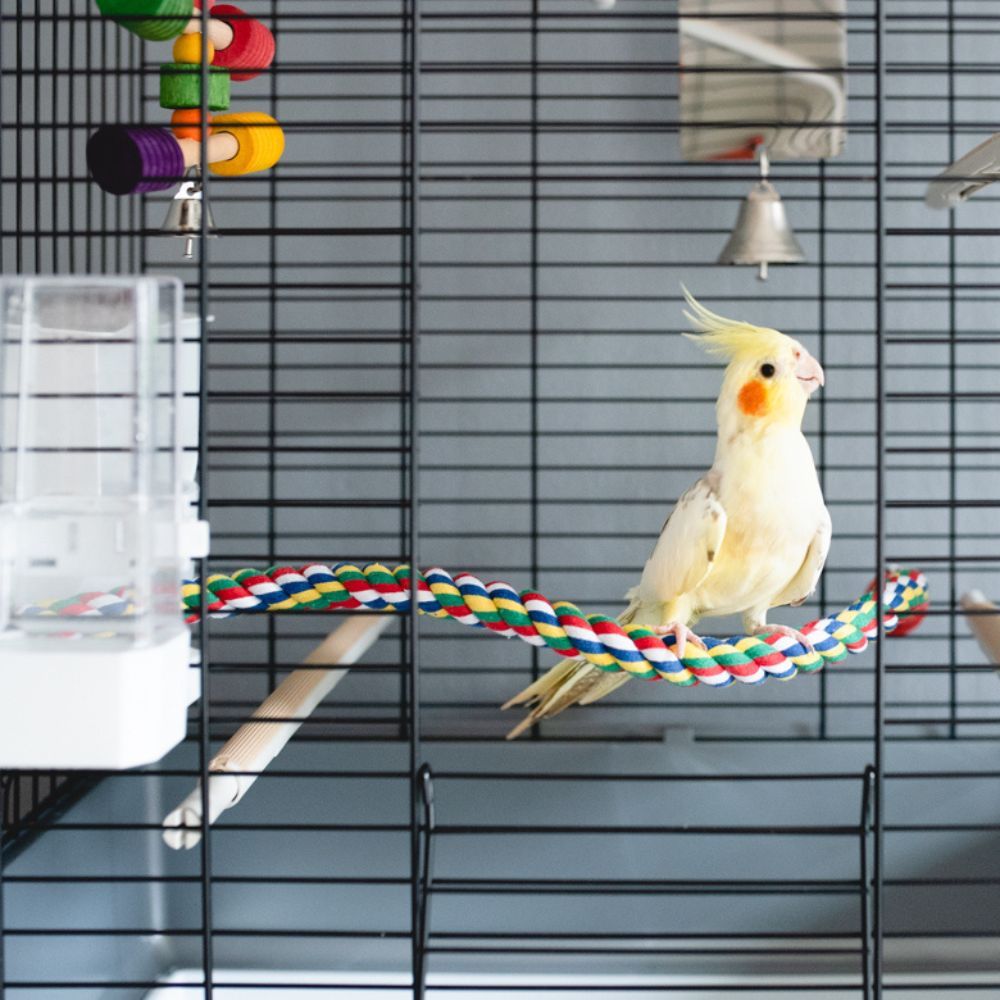
Cage Setup and Environment
Ideal Cage for Pearl Cockatiels
The cage for a pearl cockatiel should be spacious enough to allow for flight and exercise. Horizontal bars are beneficial for climbing, and the cage should be equipped with perches, toys, and a variety of stimulating activities to keep the bird engaged.
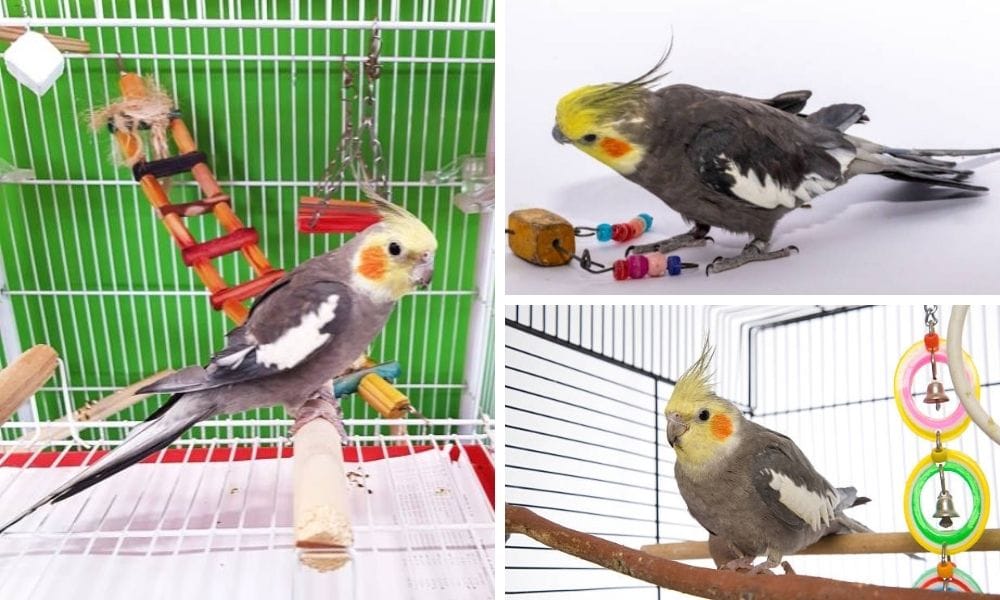
Creating a Comfortable Space for Lutino Cockatiels
Lutino cockatiels also require a large cage with plenty of room to move around. The cage should be placed in a well-lit area, but not in direct sunlight, to accommodate their sensitive eyes. Providing a variety of perches and toys will help keep them entertained and active.
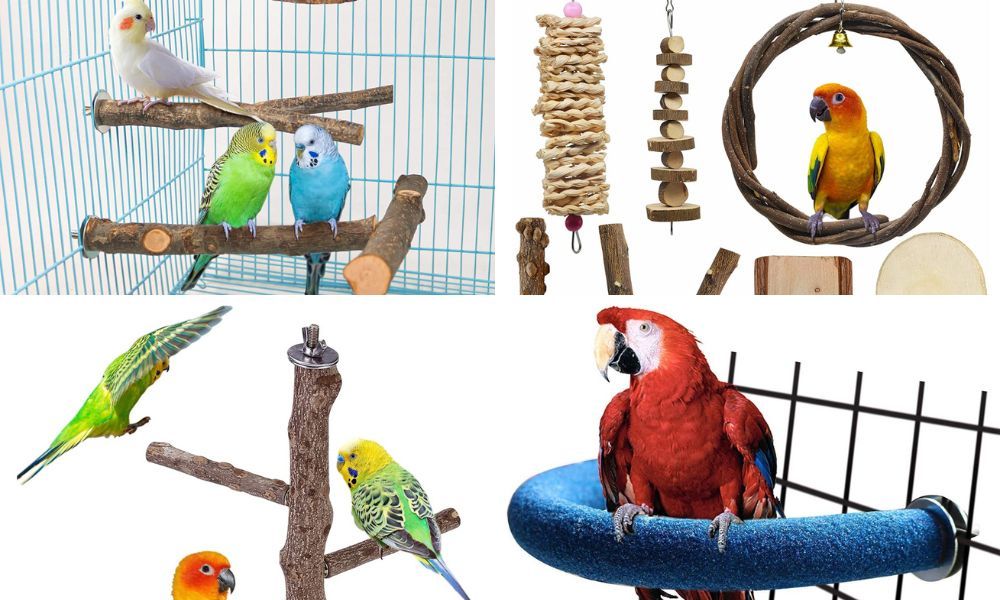
Common Health Issues
Pearl Cockatiel Health Concerns
Pearl cockatiels can be prone to obesity, which can lead to fatty liver disease if not managed properly. A balanced diet and regular exercise are crucial for preventing these issues. Additionally, they may be susceptible to feather plucking if stressed or bored.
Lutino Cockatiel Health Challenges
Lutino cockatiels may face health issues such as feather plucking and sensitivity to light due to their red eyes. It's important to monitor their environment and diet closely to prevent any potential health problems. Regular veterinary check-ups can help catch any issues early on.
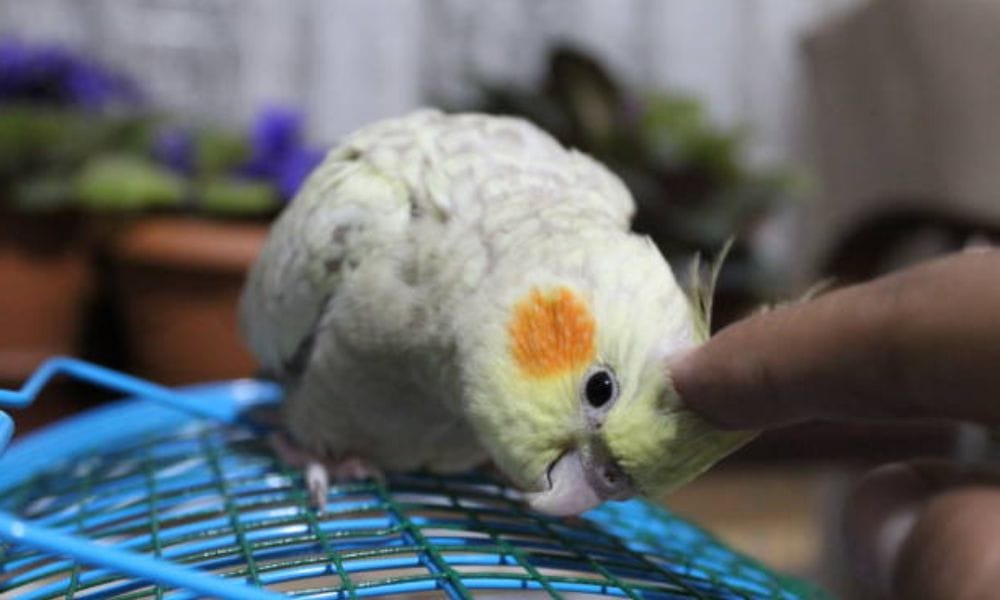
Breeding and Reproduction
Breeding Pearl Cockatiels
Breeding pearl cockatiels can be a rewarding experience for bird owners. Understanding the genetics behind the pearling pattern is important for predicting the appearance of the offspring. Providing a comfortable nesting area and a nutritious diet can help ensure successful breeding.
Reproducing Lutino Cockatiels
Lutino cockatiels are also popular among breeders for their striking appearance. When breeding lutinos, it's important to be aware of the genetic implications and the potential for producing lutino offspring. A supportive breeding environment and proper care are essential for the health of both the parents and the chicks.
Summary
In this comprehensive study, we've explored the captivating world of pearl and lutino cockatiels. From their stunning visual differences to their unique genetic traits, each variety offers something special for bird owners. Understanding their care requirements, health concerns, and behavioral tendencies is crucial for anyone considering these pet birds as companions. Whether you're drawn to the intricate patterns of the pearl cockatiel or the radiant glow of the lutino cockatiel, both make delightful and rewarding pets.
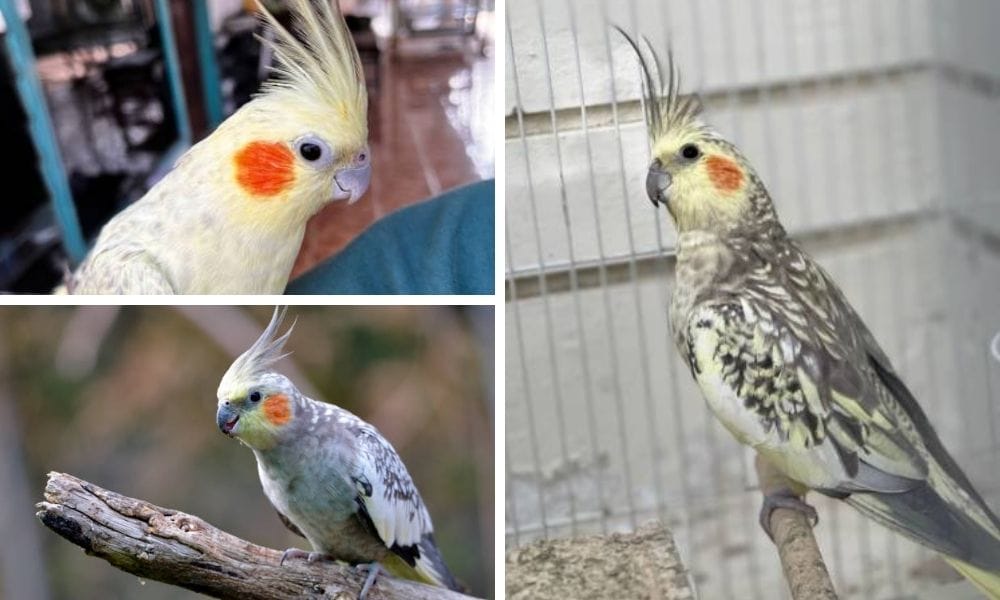
FAQ Section
Q: Can male pearl cockatiels regain their pearling after losing it? A: No, once male pearl cockatiels lose their pearling after the juvenile molt, they typically do not regain it.
Q: Are lutino cockatiels more prone to health issues than other cockatiel varieties? A: Lutino cockatiels may have some specific health concerns, such as sensitivity to light due to their red eyes, but with proper care, they can be just as healthy as other cockatiel varieties.
Q: How can I tell if my cockatiel is a pearl or lutino variety? A: Pearl cockatiels have a pattern of golden pearls on a grey body, while lutino cockatiels are characterized by their yellow pigmentation and lack of grey feathers. Males lose the pearling pattern as they mature, which can help in identification.

